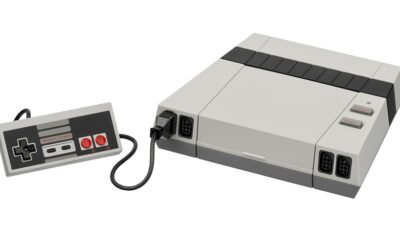In the world of computing, the Graphics Processing Unit (GPU) has emerged as a powerhouse, not only responsible for rendering graphics but also playing a critical role in scientific simulations, machine learning, and artificial intelligence. To truly appreciate the capabilities and efficiencies of GPUs, one must delve into their architecture. This article aims to break down the key components of GPU architecture and explain what makes these devices tick.
1. The Evolution of GPU Architecture
Initially designed for rendering graphics in gaming, GPUs have transformed into versatile processors that excel at parallel processing tasks. With the rise of AI and data-intensive applications, modern GPUs are engineered to handle massive datasets efficiently. The architecture has evolved from fixed-function pipelines to programmable shaders, allowing developers to create highly complex visual effects and compute tasks.
2. Basic Components of GPU Architecture
2.1. Cores and Streaming Multiprocessors
At the heart of any GPU are its cores, often referred to as CUDA cores (NVIDIA) or Stream Processors (AMD). These cores are designed for parallel processing, allowing GPUs to handle thousands of threads simultaneously. A modern GPU can comprise thousands of these cores organized into Streaming Multiprocessors (SMs) or Compute Units (CUs). Each SM can manage multiple threads, enabling the GPU to process multiple tasks concurrently.
2.2. Memory Hierarchy
GPU memory architecture is crucial for performance. The main components include:
- Global Memory: This is the largest type of memory, providing ample storage for data and textures but with relatively high access latency.
- Shared Memory: This smaller, faster memory space allows data sharing among threads within an SM, significantly speeding up access times for frequently used data.
- Registers: These are the fastest memory locations used to store temporary data. Each core has its own registers, allowing for quick access and manipulation of variables.
2.3. Cache Architecture
The cache architecture in GPUs helps mitigate the effect of memory latency. Modern GPUs employ various types of cache, including L1 and L2 caches, to allow quicker data retrieval, which is essential for maintaining the high throughput required for parallel processing.
3. The Execution Model
Understanding how GPUs execute instructions is vital for optimizing performance. GPUs utilize a Single Instruction, Multiple Threads (SIMT) model, where a single instruction is executed across multiple threads simultaneously. This model capitalizes on the hardware’s ability to perform the same operation on many data points at once.
3.1. Thread Blocks
Threads are grouped into blocks, and these blocks are further organized into a grid. Each block has a defined number of threads, and the GPU scheduler manages their execution. This hierarchical structure enables efficient resource utilization and maximum throughput.
3.2. Workload Distribution
Load balancing is essential in GPU architecture. The GPU scheduler distributes workloads across various cores effectively, reducing idle time and ensuring that all parts of the GPU are used to their full potential. This distribution is crucial for achieving high performance in parallel tasks.
4. Performance Metrics
To assess GPU performance, several metrics can be considered:
- Throughput: The number of operations processed per unit of time, a vital metric in performance evaluation.
- Latency: The time it takes to execute a single operation, important for tasks requiring rapid responses.
- Power Efficiency: Central to modern designs, measuring the performance output concerning power consumption, especially in mobile devices.
5. Modern Developments: Ray Tracing and AI Integration
Recent advancements in GPU architecture have introduced features like real-time ray tracing and dedicated AI cores. Ray tracing, which simulates complex light behavior, demands incredible processing power and has become more feasible thanks to developments in GPU architecture.
With the emergence of AI and machine learning, modern GPUs now often incorporate tensor cores and advanced architectures designed specifically for neural network computations. This versatility allows GPUs to effectively support various applications beyond traditional graphics rendering.
6. Conclusion
Understanding GPU architecture involves deciphering the intricate interplay between its cores, memory hierarchy, execution model, and modern features. As technology continues to evolve, GPUs will undoubtedly expand their influence across diverse computational fields, making it imperative for developers and engineers to grasp their underlying mechanics. The continuous innovations in GPU architecture promise not only improvements in visual graphics but also groundbreaking advancements in artificial intelligence, scientific research, and more, showcasing the immense potential of these powerful processors.


